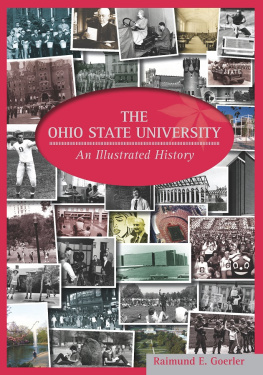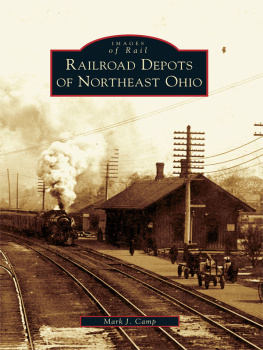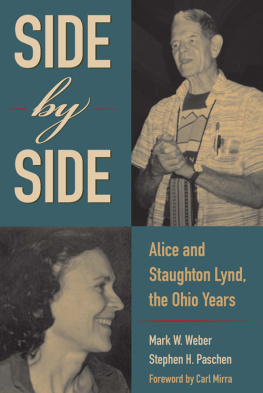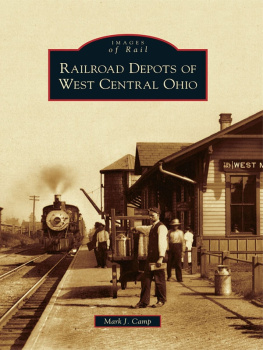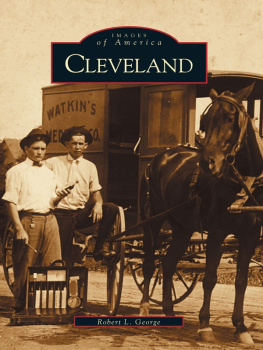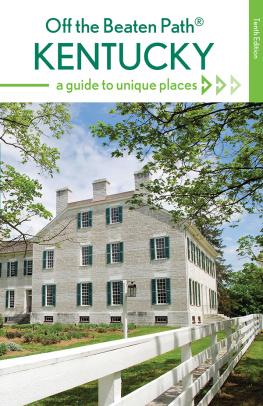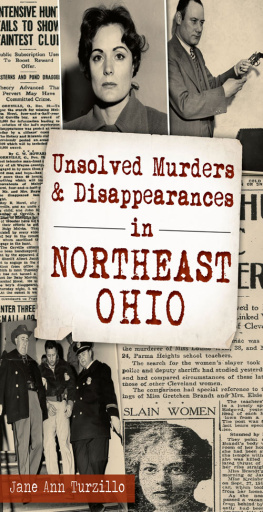Published by The History Press
Charleston, SC
www.historypress.com
Copyright 2021 by Mark Strecker
All rights reserved
First published 2021
E-Book edition 2021
ISBN 978.1.43967.382.9
Library of Congress Control Number: 2021943433
Print Edition ISBN 978.1.46715.068.2
Notice: The information in this book is true and complete to the best of our knowledge. It is offered without guarantee on the part of the author or The History Press. The author and The History Press disclaim all liability in connection with the use of this book.
All rights reserved. No part of this book may be reproduced or transmitted in any form whatsoever without prior written permission from the publisher except in the case of brief quotations embodied in critical articles and reviews.
PREFACE
There are many things about Northeast Ohios past that I didnt know and probably wouldnt have learned had I not visited many of its museums and historical sites. Its this thrill of discovery that inspired this book, which explores a lesser-known place or topic in each of this regions counties. Before I could do that, I first needed to figure out which counties are located in Northeast Ohionot as easy a task as I thought it would be, as geographers lack a consensus about which counties belong to the region. Some include just fourteen counties in their list, while others have up to twenty-two. I concluded that since Ohio has eighty-eight counties and one-fourth of that is twenty-two, twenty-two is the correct number.
Just because I chose a topic or place for a given county, that doesnt mean the events there didnt touch other counties. For example, for Columbiana County, I used the city of Salem to focus on the history of the abolitionist movement in Ohio, but it was hardly confined to this place. Medina County serves as the focal point to tell the story of the Lake Shore Electric Railway Companys interurban trolley system, which spanned from Cleveland to Toledo. Conversely, some of the history here is geographically specific. Packard Motor started in the city of Warren in Trumbull County. And the plot to liberate the Confederate prisoner of war camp on Johnsons Island could not have occurred in any other place but Erie County, just because thats where it was located.
During my research, I found so much material that this book was originally about twice its present length. Instead of saving the unused bits for another book or article, I decided to publish them on my website, www.markstrecker.com, in the form of travel logs. As a starting point for this project, I visited at least one museum or historical site in each of Northeast Ohios counties, and the travel logs on my websites are about what I found. A complete list of these places can be found in the bibliography.
ASHLAND COUNTY
The Destruction of Greentown
Near the town of Loudonville, there once stood a Native village known as Hell Town. Located on the Clear Fork branch of the Mohican River, it probably took its name from the German word for clear or transparent. No one knows its precise location, though its presumed to have stood somewhere on the southern line of what is now Green Township. Several Lenni-Lenape (Delaware) Nativesover whom were a couple notable chiefs, including Paxomet (Captain Thomas Steene Armstrong) and Kogiesch Quanoheel (Captain Pike)lived there.
When Hell Towns inhabitants heard about the massacre of the peaceful Natives in the Moravian village of Gnadenhutten (which is about forty-six miles southeast of Loudonville as the crow flies), they skedaddled.* The Hell Town residents, along with some Mingo, Mohawk and a smattering of other Natives, established a new settlement called Greentown about three miles west of what is Perrysville today, on a bluff on the north bank of the Black Fork, a tributary of Mohican River. Located in the middle of alder marshes and on high ground, it was easily defended. Its inhabitants built about 150 pole huts.
The settlement was likely named after Thomas Green, whose murky history was brilliantly outlined in two articles by Peggy Mershon that appeared in the Mansfield News Journal. He was from Wyoming Valley in Pennsylvania, which stretches along the eastern bank of the Susquehanna River and was once claimed by both Pennsylvania and Connecticut. Despite being a dedicated Tory, he inexplicably joined the American army on February 18, 1776, and deserted the next day. Perhaps he joined to get a bonus.
When the Revolutionary War broke out, the area was still a frontier, so its White settlers tried to gain the friendship or least pledged neutrality of its Native inhabitants. The British launched their own campaign of influence on the Native population. On July 3, 1778, a British lieutenant colonel, John Butler, led a contingent of rangers and Native allies to attack the Wyoming settlement. The incursion, known as the Battle of Wyoming Valley or the Wyoming Massacre, resulted in the deaths of 150 of the valleys settlers and forced the rest to surrender the forts they had built there. Although it was against the articles of war, after the surrender, the British and their Native allies plundered the settlers property and destroyed their crops. Those who survived fled east, toward the Delaware River, or to Sunbury to the southwest.
Private Tom Green was one of those rangers. Earlier in the year, on February 12, he and Parshall Terry had led a raiding party of Mohawks to the Wyoming Settlement, culminating with the robbery of the house and property belonging to Amos York, whom they kidnapped, on February 14. After the war, Green, like many Tories, fled the then-independent United States for parts outside of its jurisdiction. Its thought that he may have married a Delaware woman. Though he was tied to Greentowns formation, after this, he disappeared from the historical record, leaving his ultimate fate unknown.
Paxomet served as Greentowns leader. About sixty-five years old at the time of its founding, Paxomet was a native of Pennsylvania and had lived somewhere along the Susquehanna River. Although he was not a full-blooded Native, this small man had dark skin, poor posture and two wivesone old and one young, both of whom bore him children. He also had two deaf servants from another tribe, probably captives. For several years, American settlers got along with Greentowns inhabitants. Among the settlements closest friends was James Copus, a pious Methodist who preached in the village. Whether he was an ordained minister is unknown, but he had definitely been a hatter. Greentowns inhabitants trusted his honesty and integrity completely. Paxomet visited Copuss cabin frequently, especially in the spring, to acquire sugar made from maple sap.




